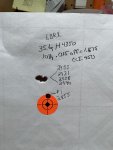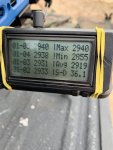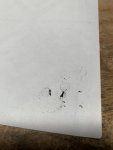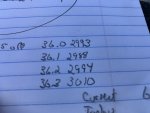SO things were going well, my rifle loved my recipe (43.4 grains of varget with a 178 ELD-M, lapua brass, BR2 primers getting me 2667 FPS) and was typically in the half to 3/4 MOA range at 100 yards. To be honest, when I was working up my initial recipe, the rifle shot all loads under 1.2 MOA. I decided to start annealing to bring down the SD and prolong brass life. Since introducing the AMP annealer in to the mix, the SD has dropped from 18 to 6, MV has stayed within 5 FPS but groups have opened up to 1 MOA being "good" and 1.5 being more the norm. The rifle is still performing with old/reference loads continue to shoot half MOA. Any assistance/confirmation of where you'd go next would be appreciated
I'm using a 2nd gen Amp annealer, in AZTEC mode, when I ran the test it spat out code 170 (so that's what I've been using in aztec mode to anneal)
My old process
20 min SS tumble w/soap
lube
decap/resize
trim
chamfer
debur
mandrel die
45 min SS tumble w/soap
prime
load
New process
20 min SS tumble w/soap
anneal
lube
decap/resize
trim
chamfer
debur
mandrel die
45 min SS tumble w/soap
prime
load
I've read that some people are using graphite to lube the inside of the necks before they load, I haven't gone down this road yet, it's the last thing I can think to try, but I'd appreciate some opinions if you guys are willing to share them.
I'm using a 2nd gen Amp annealer, in AZTEC mode, when I ran the test it spat out code 170 (so that's what I've been using in aztec mode to anneal)
My old process
20 min SS tumble w/soap
lube
decap/resize
trim
chamfer
debur
mandrel die
45 min SS tumble w/soap
prime
load
New process
20 min SS tumble w/soap
anneal
lube
decap/resize
trim
chamfer
debur
mandrel die
45 min SS tumble w/soap
prime
load
I've read that some people are using graphite to lube the inside of the necks before they load, I haven't gone down this road yet, it's the last thing I can think to try, but I'd appreciate some opinions if you guys are willing to share them.
Last edited:






